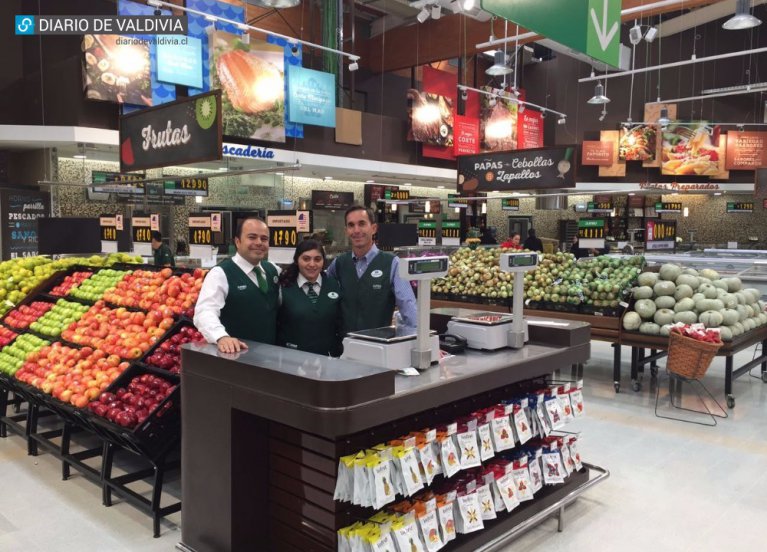Source: ccacoalition.org
Published: January 18, 2017

Jumbo supermarket in Valdivia, Chile installs transcritical carbon dioxide refrigeration
by CCAC secretariat
A supermarket in Chile has become the first in the country to adopt new refrigeration technology in an effort to both showcase alternatives to hydrofluorocarbons (HFCs) and a national commitment to more climate-friendly refrigeration technologies.
HFCs were introduced as a replacement to ozone depleting chlorofluorocarbons (CFCs) but have a global warming potential that can be thousands of times that of carbon dioxide (CO2). This has led to a global effort to find alternative refrigerants and coolants and to introduce an amendment to the Montreal Protocol (known as the Kigali Amendment) to phase down HFCs.
Technology demonstrations are needed to test the viability of new refrigeration technologies. Under this framework the Ozone Unit of Chile’s Ministry of Environment, with funding from the Climate and Clean Air Coalition (CCAC) and support from the United Nations Development Programme (UNDP), installed a Transcritical CO2 refrigeration system at the Jumbo Supermarket in the City of Valdivia.
Claudia Paratori, Coordinator of the Ozone Unit said that this was the first instance of transcritical CO2 refrigeration in Chile and was an opportunity to promote the technology in the country.

Staff at the Jumbo supermarket in Valdivia, Chile. The new supermarket is using transcritical CO2 for its refrigeration
“This project will connect the different actors in the cold chain supermarket sector and promote the adoption of this technology and help minimize the introduction of HFC based systems in Chile,” Ms Paratori said. “The implementation of this project will generate multiple benefits for the environment and society. The Ministry of the Environment also hopes it will contribute to the local environmental management of the city of Valdivia.”
The project aims to highlight ways to reduce greenhouse gas emissions and introduce environmentally friendly technology. It also has economic benefits with approximately 20% in energy savings. Moving away from HFCs also honors Chile’s commitments to the Montreal Protocol.
“After the adoption of the Kigali Amendment and the entry into force of the Paris agreement, nations and the industry must move quickly to seize the immediate opportunities at hand to avoid the growth of HFCs and realize energy efficiency gains of technology change in the refrigeration sector. We are proud to have supported the implementation of this project and thank the government of Chile for their commitment and leadership in promoting ozone and climate-friendly technologies. UNDP will continue to support countries as the world transitions to more sustainable technologies in the refrigeration and air-conditioning sector,” said Mr. Jacques Van Engel, Director of the Montreal Protocol/Chemicals Unit, UNDP.
CO2 was used as a refrigerant from the mid-1800s up until the 1940s, when synthetic halocarbons like CFCs began replacing it. Its use enabled the liberalization of the fresh food market. It is considered a ‘natural refrigerant’ because it is naturally occurring chemical. It is also non-flammable and characterized as non-toxic.
The supermarket industry was identified as the largest user of HFCs in Chile following a CCAC and UNDP national inventory of HFCs consumption and emissions. This enabled the government to understand the current state of consumption and the general uses of HFCs in Chile and to prioritize the sector for intervention.
The Coalition’s HFC initiative aims to significantly reduce projected HFC use and growth over the coming decades and works with private sector, civil society, international organizations and governments.
The CCAC is also implementing technology demonstration projects in Jordan for commercial refrigeration sector, and in India for the mobile air-conditioning sector.
Chile is a partner of the CCAC, an initiative launched in 2012 by the United Nations Environment Programme (UN Environment) and a group of countries, to exercise a Collective action to reduce Short Life Pollutants (SLCPs) such as black carbon, methane and HFCs. The Assistant Secretary for the Environment, Mr. Marcelo Mena, is Co-Chair of the Working Group of the CCAC.
Read the original Chile Ministry of Environment press release (in Spanish) here.
